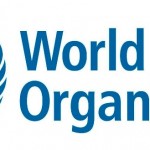 Just when it looked as if polio was nearing global eradication, the World Health Organisation (WHO) declared the international spread of polio a public health emergency that warranted aggressive control measures.
Just when it looked as if polio was nearing global eradication, the World Health Organisation (WHO) declared the international spread of polio a public health emergency that warranted aggressive control measures.
In response, WHO has urged all nations to carry out more vigorous immunisation campaigns.
Ten countries currently have active transmission of wild poliovirus; three of these countries are still endemic for the disease and seven are classified re-infected.
In Geneva this week, experts at the World Health Assembly, the world’s health policy-making body, are expected to discuss the emergency measures intended to reach all children with oral polio vaccine.
All countries are expected to implement phase 1 containment activities for poliovirus by the end of 2015, ensure highly sensitive surveillance for polioviruses, and implement relevant polio vaccination recommendations for travellers.
These WHO declarations underscore the urgent need to eradicate the disease; and yet, younger generations in many countries have lived in polio-free countries for so long, they don’t know what polio is, or why it’s such a pressing threat.
Polio is a highly contagious, devastating disease that mainly affects children under five years of age. It invades the nervous system, and can cause total paralysis in a matter of hours.
The virus enters the body through the mouth, multiplies in the gut, and spreads easily via faecal contaminated food and water. Initial symptoms to look out for include fever, fatigue, headache, vomiting, stiffness in the neck and pain in the limbs.
There is no cure for polio, but it can be prevented through administration with oral polio vaccine (OPV). Given multiple times, it can protect a child for life.
Reaching every last child
Since its launch, the Global Polio Eradication Initiative (GPEI), a public-private partnership including Rotary, WHO, UNICEF, the United States Centres for Disease Control and Prevention, and more recently, the Bill & Melinda Gates Foundation and national governments, has reduced the global incidence of polio by more than 99%. More than 10 million people are walking today who otherwise would have been paralysed.
Until polio is eradicated, all countries remain at risk of outbreaks.
Together, we have eliminated 99% of cases since 1988 — when the world saw 1 000 cases per day. With only 1% left, we are “This Close” to ending polio for good.
Rotary International, a spearheading partner of the GPEI, decided to aggressively increase polio awareness by launching an online photo awareness campaign where participants submit a picture making the “This Close” gesture, relaying how close we are to ending this disease.
As of this week, the World’s Biggest Commercial now has more than 100 000 participants from 171 countries. To spur participation at the launch of the World’s Biggest Commercial campaign, PhRMA donated USD 50 000 to Rotary’s PolioPlus program — enough to provide oral vaccine to protect more than 83 000 children against the paralysing disease.
You can take action by showing your support. Be part of the World’s Biggest Commercial. Snap a photo of yourself making the “This Close” sign and upload it into the commercial. Show it to your friends and family and ask them to do the same.
Your involvement will help convince world leaders that the support for polio eradication is global.
It’s time to make history together. Tweet to @endpolionow and let @rotary know what you are doing to help #endpolio and visit http://thisclose.endpolio.org/en to submit your “This Close” photo.
Source: News Day

















